World’s Largest Small-Scale Model, The Mississippi River Basin Model sets world record
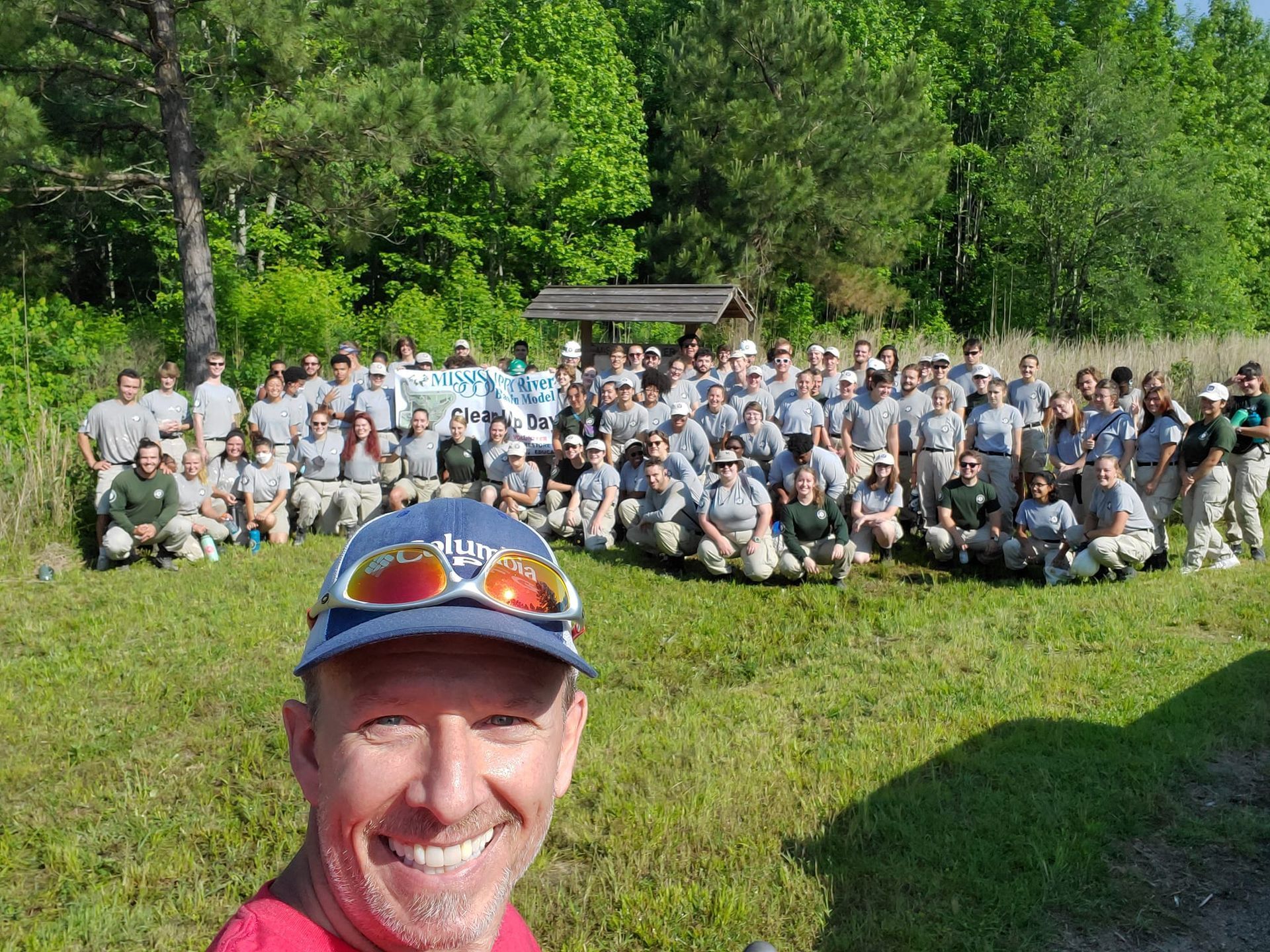
Jackson, Mississippi, United States--The Mississippi River Basin Model, a large hydraulic model of the entire Mississippi River basin that covers an area of 210 acres, sits within Buddy Butts Park at McRaven Road in Jackson, Mississippi; the model represented 1.25 million square miles of the Mississippi on a three-dimensional map of half the American continent, which was displayed horizontally on a scale of 1: 2,000, vertically on a scale of 1:100 and covered more than 200 acres and sets the world record for being the World’s Largest Small-Scale Model, according to the WORLD RECORD ACADEMY.

"The model was built from 1943 to 1966 and in operation from 1949 until 1973. By comparison, the better known San Francisco Bay Model covers 1.5 acres and the Chesapeake Bay Model covers 8 acres. The model is now derelict, but open to the public within Buddy Butts Park, Jackson.
"The scale of the model was 1:100 vertical and 1:2000 horizontal. At this scale, the Appalachian Mountains are raised 20 ft above the Gulf of Mexico, the Rocky Mountains by 50 ft. The larger vertical scale was thought to reduce surface-tension and therefore better simulate turbulence. The model used individually cast 10 ft x 10 ft (approximate) concrete panels, contoured with the land shape and river bed, including tributaries, cliffs, lakes, flood plains, bridges, and levees. Metal plugs or divots in the river bed provided roughness to simulate different types of material, whilst folded metal mesh simulated dense foliage. With each gallon of water representing 1.5 million gallons, an entire day of river flow along the whole system could be simulated in 5 minutes.
"In 1993 the site was taken over by the City of Jackson, designated as a Mississippi Landmark and a city park was formed around the site. The cost of maintaining the site as a tourist attraction was too high, so the model was abandoned and became overgrown. In 2000, the model was included in the Mississippi Heritage Trusts' 10 Most Endangered List, featured in a Google Sightseeing post in 2007 , and thereafter was visited and blogged about by several urban explorers and photographers. In 2010, it was reported that the panels were still intact, and observation platforms and walkways still in place." (Wikipedia)
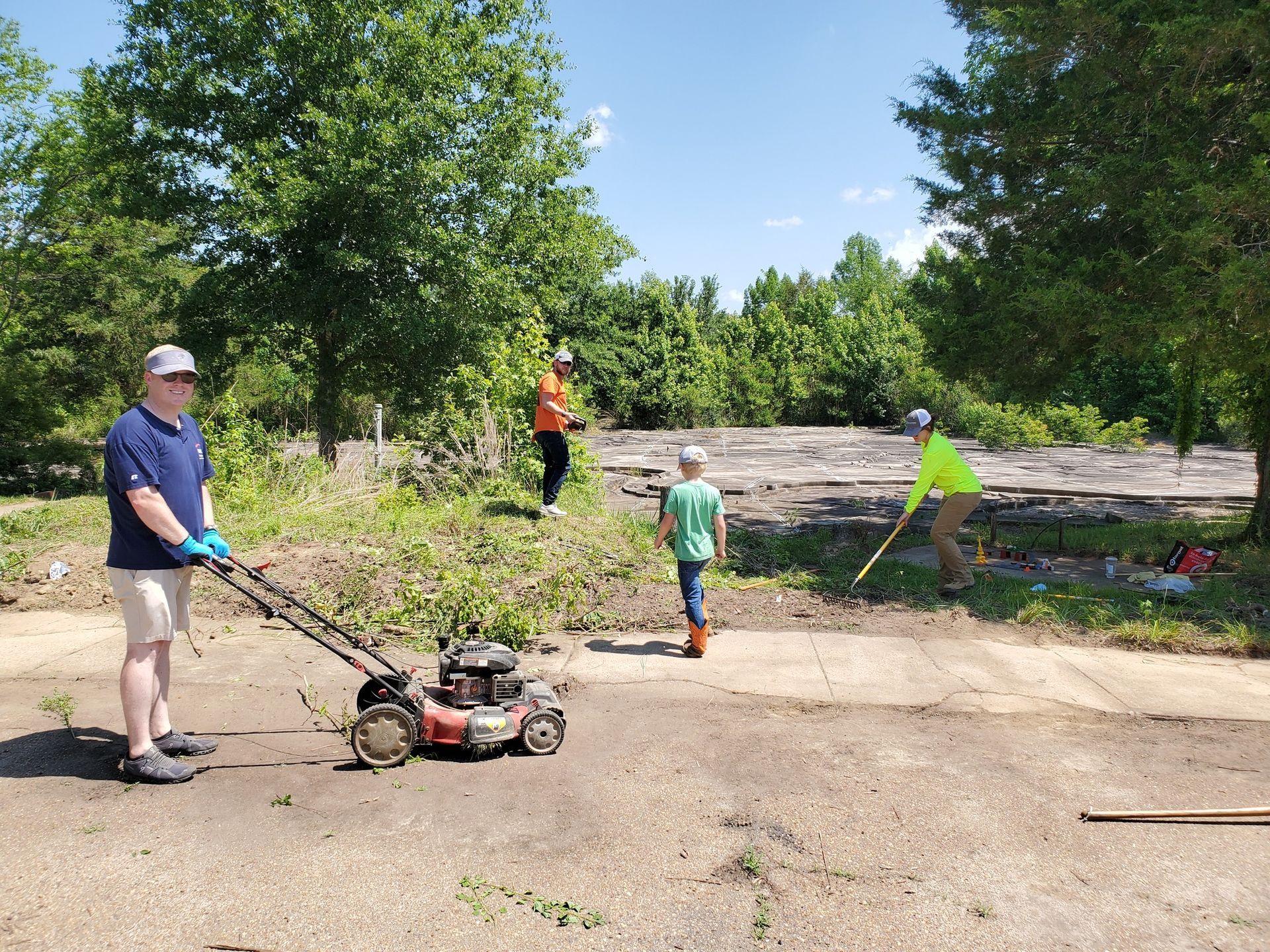
"The Mississippi River Basin Model is a large hydraulic model of the entire Mississippi River basin that covers an area of 210 acres. The model sits within Buddy Butts Park at McRaven Road in Jackson," the Vicksburg Daily News says.
"The U.S. Army Corps of Engineers has built many physical models of rivers, ports, and estuaries, but none compare to the scale of the Mississippi River Basin Model. In the 1940s, computers were not yet up to the task of modeling complex systems, so the best way to study the world was to construct elaborate scale models. Although the Army Corps has built many of such models in the last century, none have surpassed the scale of the Mississippi River Basin Model.
"The model represented 1.25 million square miles of the Mississippi on a three-dimensional map of half the American continent, which was displayed horizontally on a scale of 1: 2,000, vertically on a scale of 1:100 and covered more than 200 acres. The ambitious model mirrored the current topography of the Mississippi River basin and used data from hydrographic and topographic maps, aerial surveys and valley cross sections."
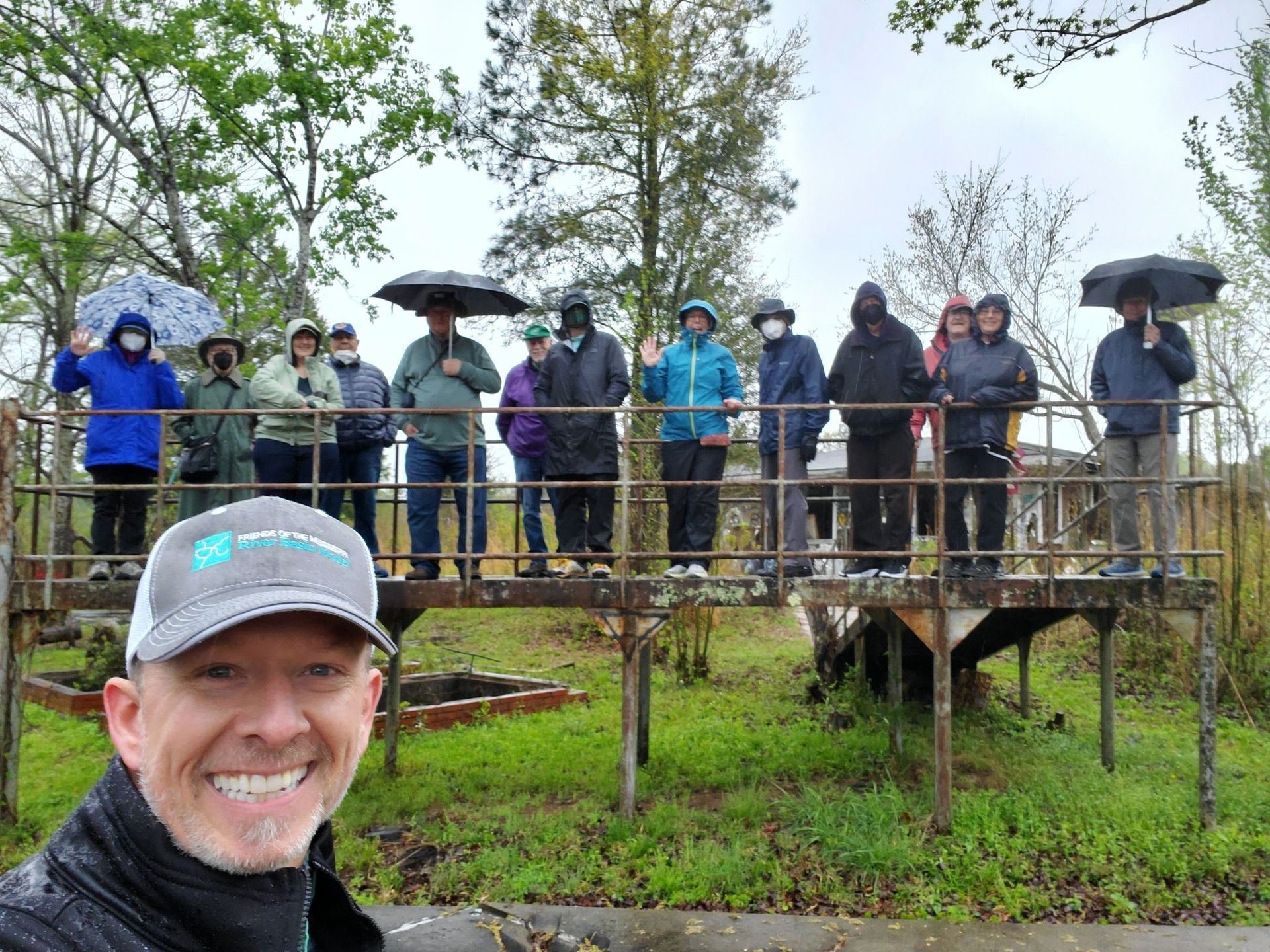
"The U.S. Army Corps project covers more than 200 acres just northwest of Jackson, Mississippi, detailing in concrete the drainage basin of the Mississippi River system at an astounding scale. For decades in the mid-20th century, the model played a critical role in the Army Corps’ levees and flood mitigation systems," the ASCE says.
"The Friends have put in years of hard work to restore the park and clean up the model. ASCE designated it a National Historic Civil Engineering Landmark in 2018, and now it turns 80 in much better shape than when McEwen first explored the site nearly a decade ago.
"“There’s always going to be a place for physical models,” McEwen said. “There are definitely advancements in how physical modeling is done. You can look at what LSU is doing with their Center for River Studies. They have the Lower Mississippi River Physical Model with sediment transport."
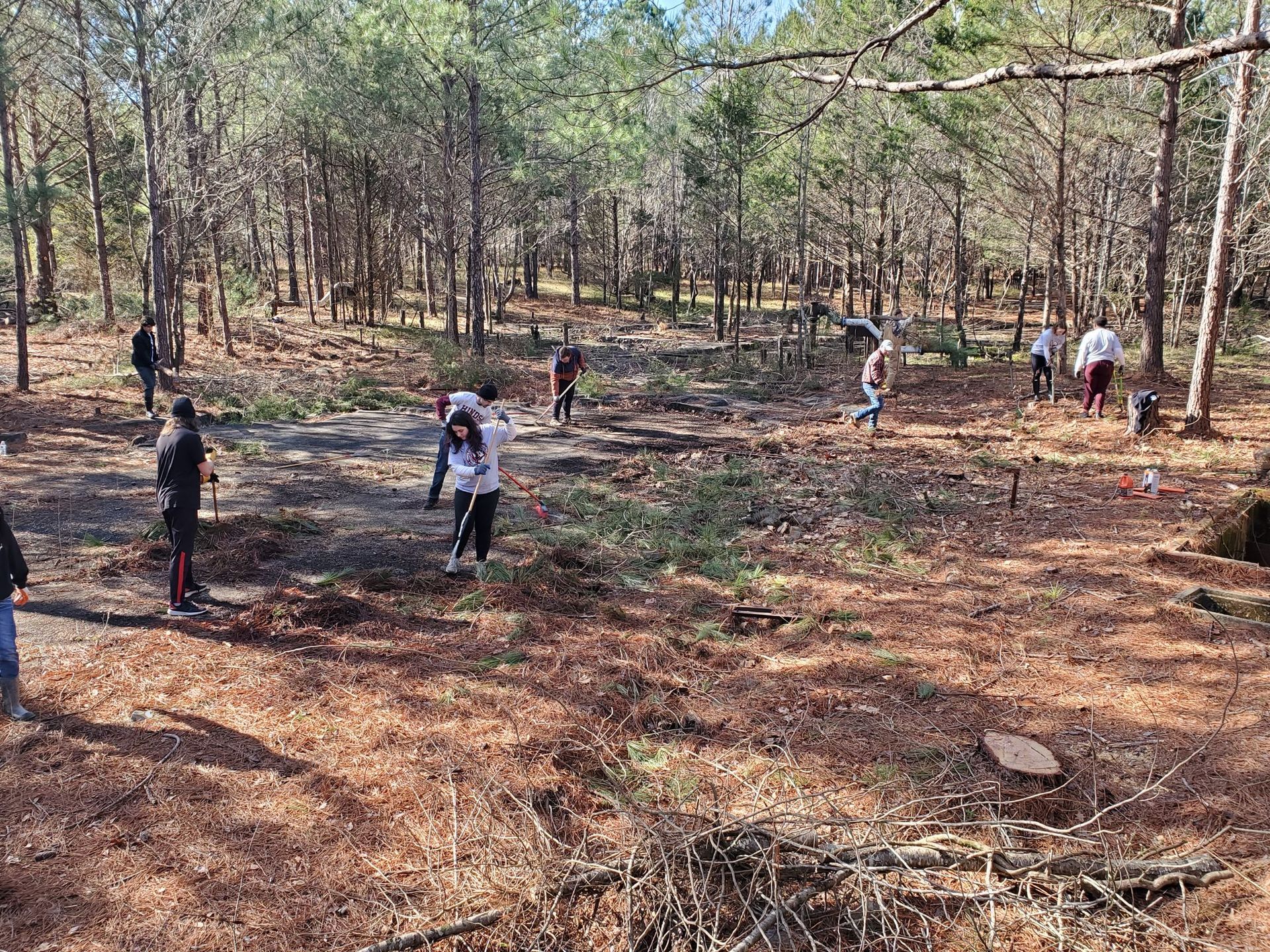
"While the Army Corps of Engineers built many such models over the last century, none were on the scale of the Mississippi River Basin Model. It is the largest small-scale model ever built, representing 41% of the US in miniature, and the more than 15,000 miles of rivers that make up the Mississippi river basin laid out in eight miles worth of tiny, winding streams on 200 acres of park land. Today it sits abandoned and overgrown," the Atlas Obscura says.
"The Army Corps began building the most ambitious research project they had ever undertaken. Aimed to be completed by 1948, the model took a bit longer to be finished. Though elements of the model were in use as early as 1949, the model wasn’t truly finished until 1966, a full 26 years after it was started. Six years later it was used for the last time.
"The model, built at a skewed ratio, with a horizontal scale of 1:2000, but vertical scale of 1:100 (meaning the Rocky Mountains would be a towering 50-feet tall) did get good usage over its operating years. It saw 79 simulations run, with each simulation taking anywhere from weeks to months. In 1952, information gathered using the model prevented major flooding in Omaha, avoiding as much as 65 million in flood damages. The site also became a tourist destination for a time, drawing over 5,000 people a year to stride like giants along walkways above the banks of the tiny Mississippi."

"Reybold came up with a radical idea: a large-scale hydraulic model that would enable engineers to observe the interactive effects of weather and proposed control measures over time and “develop plans for the coordination of flood-control problems throughout the Mississippi River Basin.” Only a physical model of all lands affected by the Mississippi River and its tributaries could meet the three major goals of the Army Corps," the Places Journal says.
"The Mississippi Basin Model quickly became the most complicated, expensive and time-consuming research project ever undertaken by the Corps. Early reports predicted that the model would be completed by 1948; later reports implied a delay of five to ten years. 14 As early as 1949, upper sections were opened for testing, but by 1959 the model had been completed only as far south as Memphis, Tennessee. 15 The seemingly straightforward design-and-build phase had been complicated by postwar transition and inefficient bureaucracy.
"The model had allowed the Mississippi River Basin to become, for the purposes of study, an object, a manageable site. Here engineers, community leaders and civilians could gather to discuss the potential ramifications of particular flood control measures and forecast likely scenarios. Each gallon of water passing through the model was the equivalent of 1.5 million gallons per minute in the real river, meaning one day could be simulated in about five minutes. This allowed for a tremendous capacity to collect data, to use the model as an active tool for communication, and to distribute information about the river as a system."
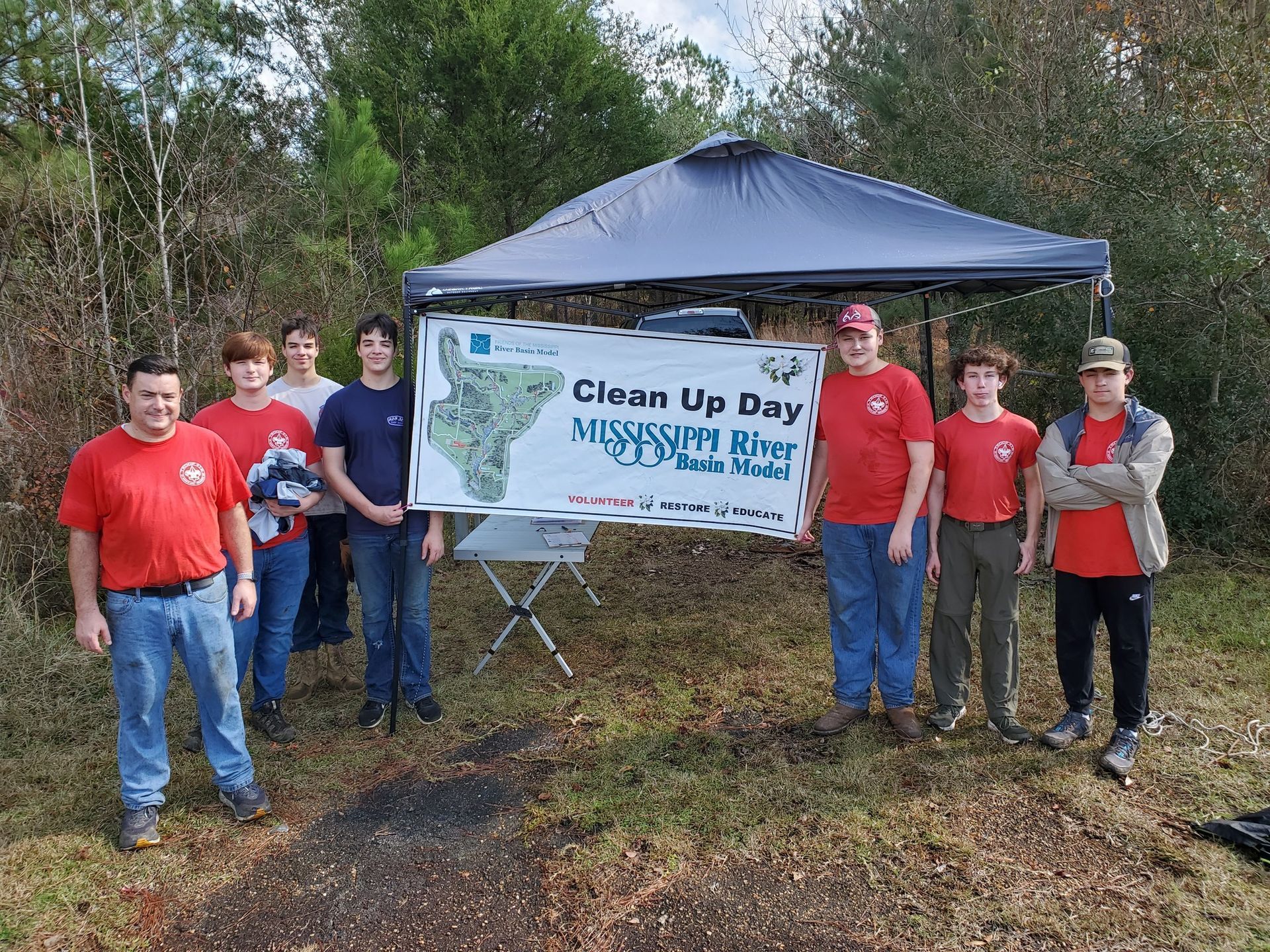
"The design for the site and visitor center at the Mississippi River Basin Model is inspired by the site, construction, and form of the River Basin Model itself," the Burris/Wagnon Architects says.
"The model exhibits an amazing combination of the natural power of water on our national geography and man’s ability to understand and tame this force for a mutually beneficial and stable relationship. This endeavor brought diverse people and talents together to build an engineering marvel that represents a unique time in our national history and the understanding of our world.
"The Mississippi River Basin Model, Waterways Experiment Station is registered as a Mississippi Landmark site, and it is currently in the process of National Landmark Registration. The Model will be preserved and restored under the Landmark standards, and will become an interactive, educational site. The concrete model will be stabilized and existing pump houses and site artifacts will be preserved as educational nodes throughout the site. A portion of the model will be restored to operation as a display of the geological and hydrological engineering and cartography behind the model and its construction."
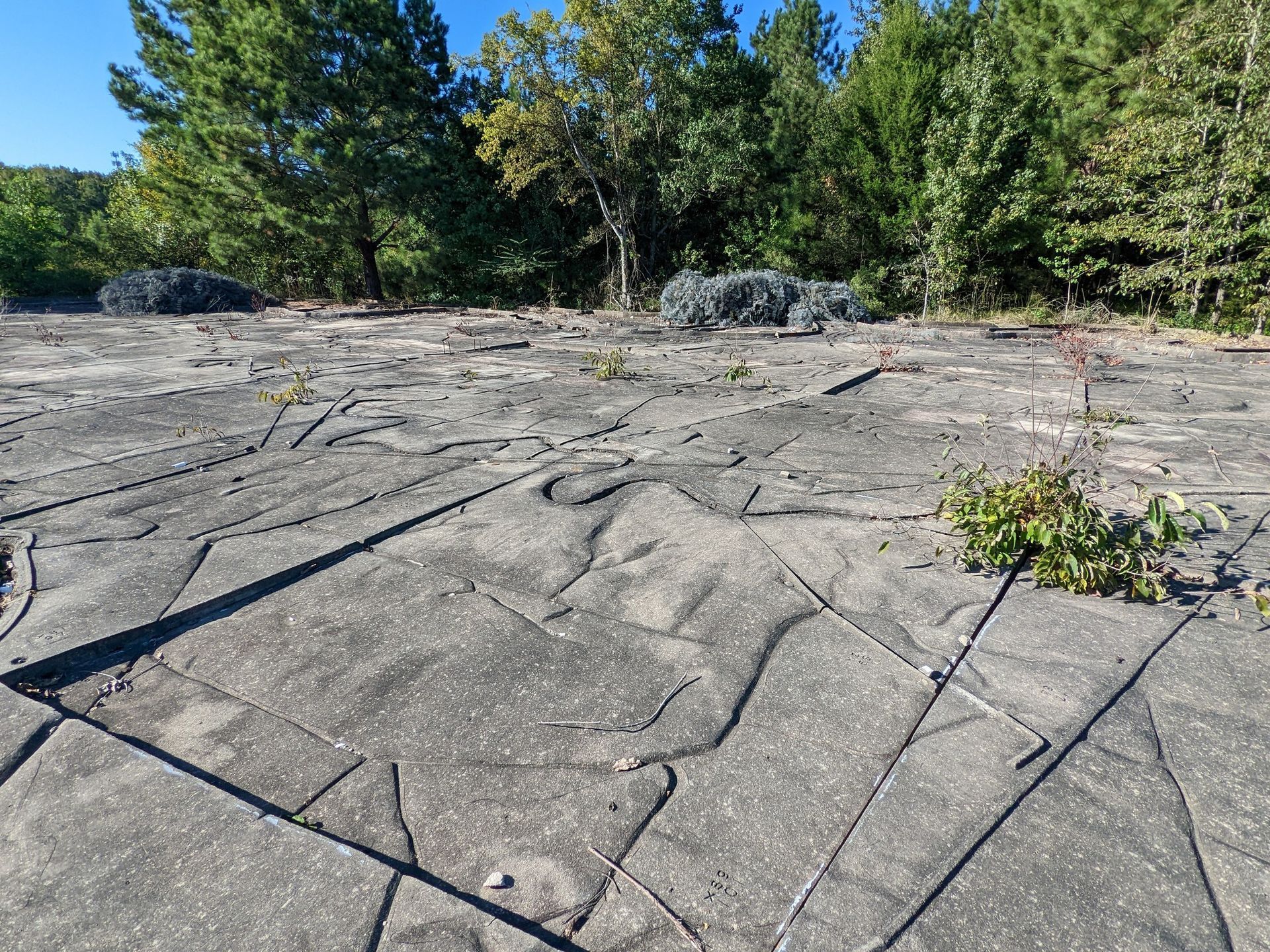
"The Mississippi Basin Model, the largest small-scale working model in the world, reproduces the entire drainage basin of the Mississippi River and its tributary system to a horizontal scale of 12000 and a vertical scale of 1100," the Defense Technical Information Center says.
"The model has the appearance of a gigantic relief map with the streams and floodplains molded in concrete in their correct geographic locations. Construction of the model was begun by German prisoners of war in the fall of 1943, was continued by civilian personnel of the U.S. Army Engineer Waterways Experiment Station WES after the prisoners were transferred in 1946, and was completed in 1966.
"The Mississippi Basin Model Board the group charged with determining policies and programs for development and operation of the model unanimously agreed that the model has been a very valuable tool in solving many flood-control problems and in providing the answers to many of the questions with regard to the coordinated operation of reservoirs within the basin."
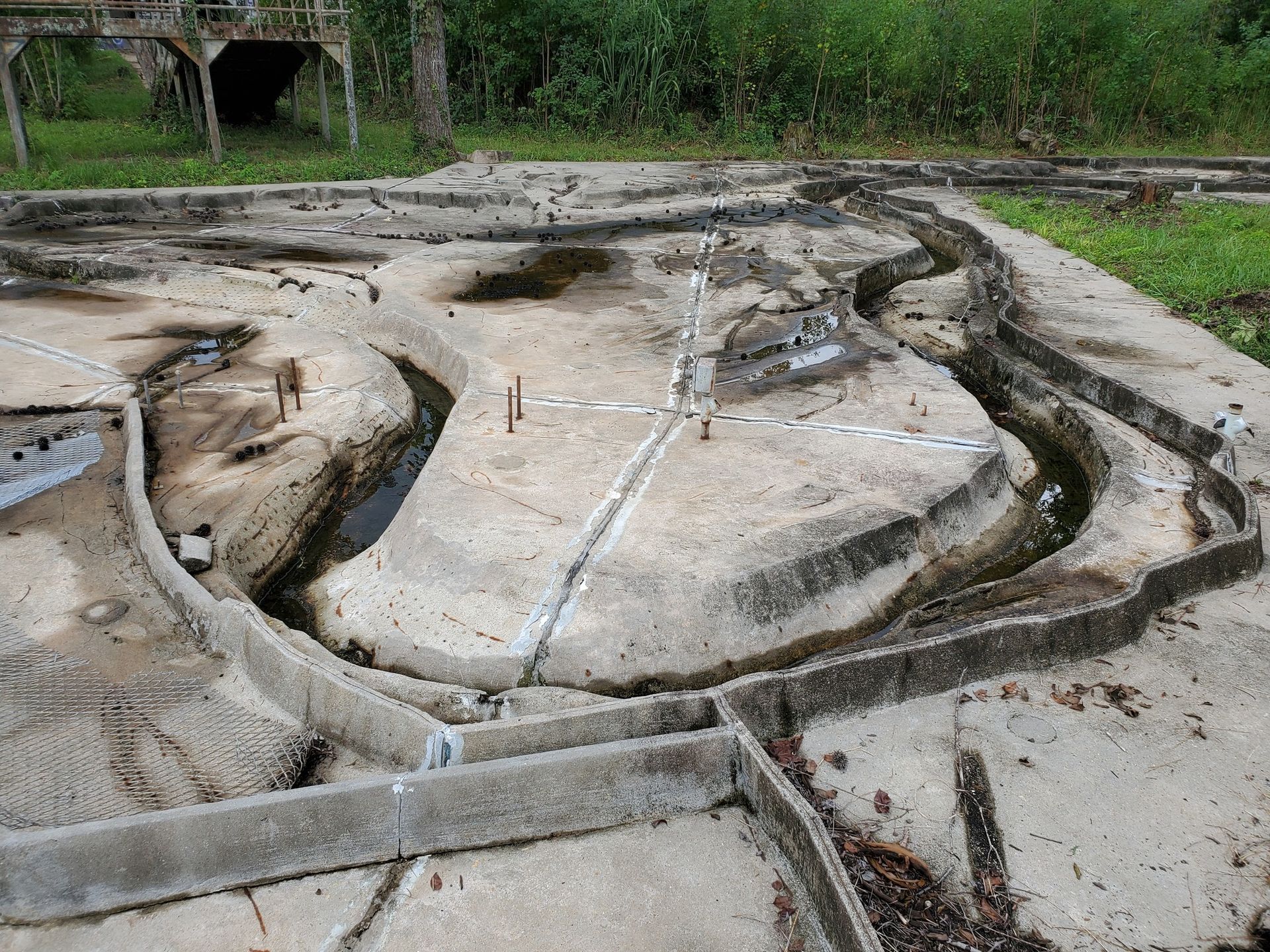
"The 210-acre river model, which is now owned by the City of Jackson, was developed by the U.S. Army Corps of Engineers as a way to study and control flooding along the Mississippi River and the rivers that feed into it following the Great Flood of 1937 in which the Ohio River tributary flooded a decade after the Great Mississippi River Flood of 1927," The Clarion-Ledger says.
"Essentially designed as a giant, three-dimensional topographic map, the site features the hills, rivers, lakes and valleys of roughly 41% of the entire continental United States, all molded into concrete.
"Over the years, the facility was credited for saving lives and preventing millions of dollars in damages. But with the advent of computer modeling, operations at the facility were eventually abandoned."
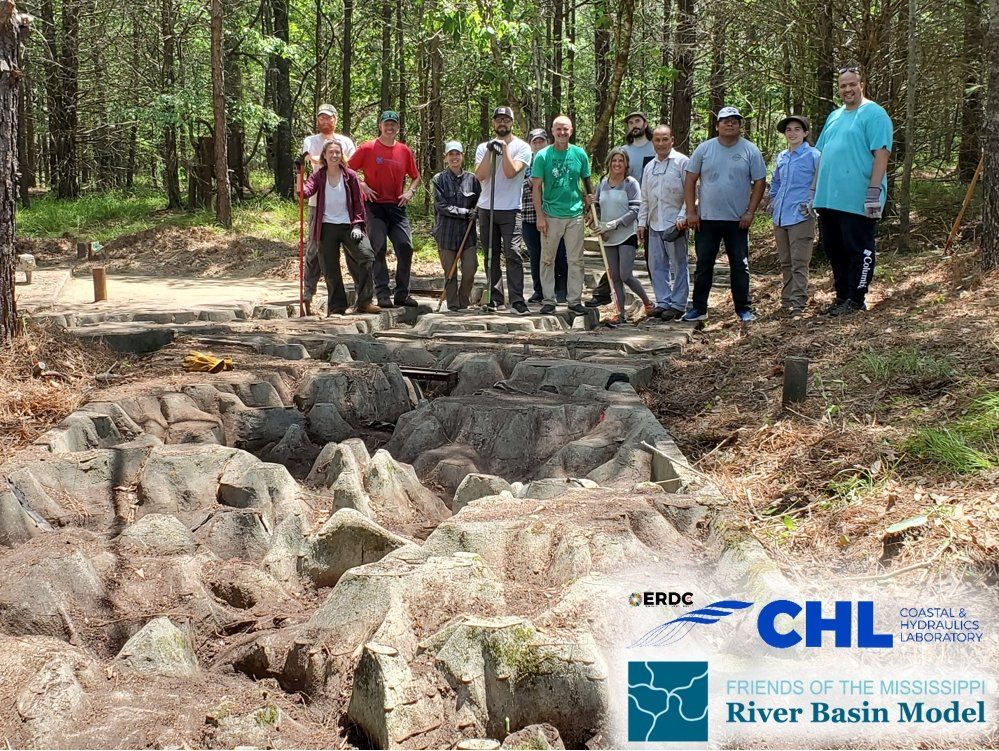
"The Magnolia State is full of surprises, and one of the biggest is the Mississippi River Basin Model in Jackson. At 200 acres, it’s the biggest small-scale model in the world! It’s an amazingly unique gem, which makes the fact that it was abandoned and left to decay, pretty shocking," the Only In Your State says.
"Billed as the Army Corps of Engineers’ “most ambitious research project,” the Mississippi River Basin Model is in Jackson’s Buddy Butts Park. Absolutely massive, the 200-acre model portrays 41% of the U.S. and the more than 15,000 miles of rivers that make up the Mississippi River Basin!
"Luckily, all hope isn’t lost for the model. The group, Friends of the Mississippi River Basin Model, are currently working to restore the model as well as Buddy Butts Park."
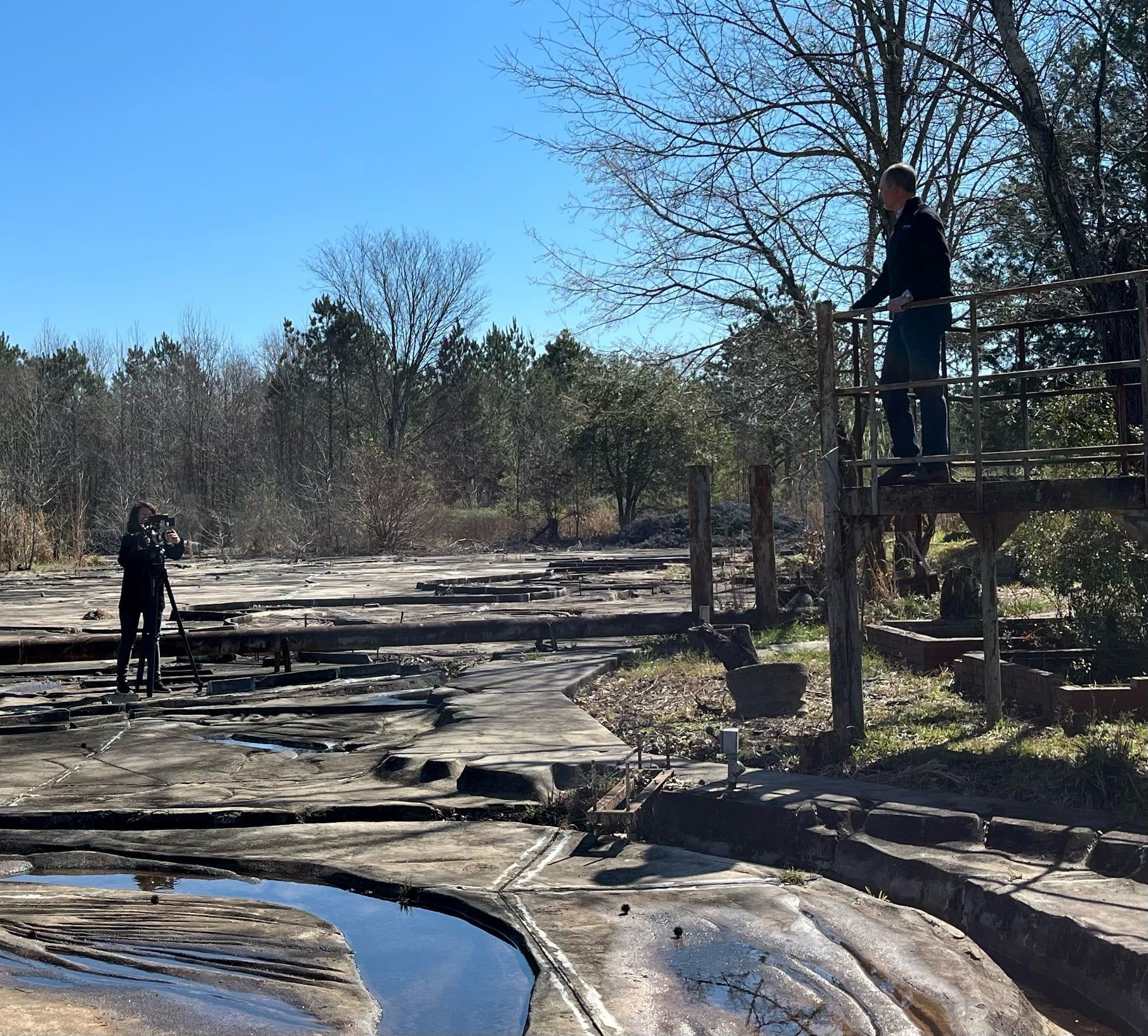
"The Mississippi River Basin Model is a scale replica of the Mississippi River watershed. The site was originally built by German prisoners of war who were housed at Camp Clinton," the Mississippi Humanities Council says.
"The model was an imperative scientific experiment that could efficiently perform complicated numerical analyses, and now the once abandoned site is being repurposed. The model, large and sprawling, shows decades of neglect. None of the owners of the model have known quite what to do with it, so it has sat unused and uncared for, for years.
"In late 2016, a group of volunteers founded Friends of Mississippi River Basin Model to restore the model, renew Buddy Butts Park, and enhance educational opportunities for children in Mississippi."
Photos: World’s Largest Small-Scale Model, The Mississippi River Basin Model sets world record
(1) Facebook/Friends of Mississippi River Basin Model
(2) "Thank you, Gregor Holzinger (architect and photographer) of Vienna, Austria for reaching out to tour this historic landmark." Photo: Facebook/Friends of Mississippi River Basin Model





